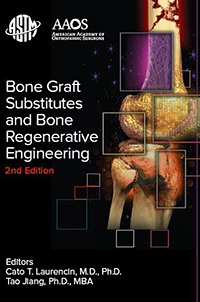 The Institute for Regenerative Engineering has published the landmark book Bone Graft Substitutes and Bone Regenerative Engineering. The book provides a well-rounded and articulate summary of the present status of using allogeneic, xenogenic, and synthetic bone graft substitutes to reconstruct bone tissues. To reflect on the importance of the concept of convergence, Bone Graft Substitutes and Bone Regenerative Engineering captures the excitement of the new field we call Regenerative Engineering. The chapters of the book are written by the leading researchers in academia, surgeons, industry leaders and regulatory specialists. We believe this new book, following the very successful first edition entitled Bone Graft Substitutes, will be of value to people who work in all fields involving bone. I thank Dr. Tao Jiang, my co-editor, for his time and effort in working with me. In addition, the publication of this book would be impossible without the assistance from numerous people at ASTM International. Finally, I also want to thank the Raymond and Beverly Sackler Foundation for their tremendous support in all our efforts to define the new field of Regenerative Engineering.
The Institute for Regenerative Engineering has published the landmark book Bone Graft Substitutes and Bone Regenerative Engineering. The book provides a well-rounded and articulate summary of the present status of using allogeneic, xenogenic, and synthetic bone graft substitutes to reconstruct bone tissues. To reflect on the importance of the concept of convergence, Bone Graft Substitutes and Bone Regenerative Engineering captures the excitement of the new field we call Regenerative Engineering. The chapters of the book are written by the leading researchers in academia, surgeons, industry leaders and regulatory specialists. We believe this new book, following the very successful first edition entitled Bone Graft Substitutes, will be of value to people who work in all fields involving bone. I thank Dr. Tao Jiang, my co-editor, for his time and effort in working with me. In addition, the publication of this book would be impossible without the assistance from numerous people at ASTM International. Finally, I also want to thank the Raymond and Beverly Sackler Foundation for their tremendous support in all our efforts to define the new field of Regenerative Engineering.
Bone Graft Substitutes and Bone Regenerative Engineering (2nd Edition): Our Newest Book
May 29, 2015
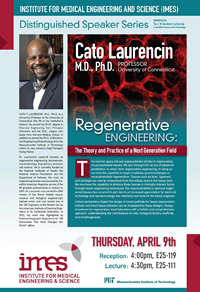 On April 9, I gave a plenary lecture as part of the Institute for Medical Engineering & Science (IMES) Distinguished Speaker Series at MIT. My talk highlighted the importance of convergence research as illustrated by some of our recent work in the Institute for Regenerative Engineering.
On April 9, I gave a plenary lecture as part of the Institute for Medical Engineering & Science (IMES) Distinguished Speaker Series at MIT. My talk highlighted the importance of convergence research as illustrated by some of our recent work in the Institute for Regenerative Engineering. On March 6th, UConn Health hosted the second Women in Surgery Lectureship with guest lecturer Dr. Andrea Hayes-Jordan, Director of Pediatric Surgical Oncology and Associate Professor of Surgical Oncology and Pediatrics at University of Texas MD Anderson Cancer Center. The lectureship, co-sponsored by CICATS and the Department of Surgery, was moderated by Dr. Linda Barry, CICATS COO and Assistant Director.
On March 6th, UConn Health hosted the second Women in Surgery Lectureship with guest lecturer Dr. Andrea Hayes-Jordan, Director of Pediatric Surgical Oncology and Associate Professor of Surgical Oncology and Pediatrics at University of Texas MD Anderson Cancer Center. The lectureship, co-sponsored by CICATS and the Department of Surgery, was moderated by Dr. Linda Barry, CICATS COO and Assistant Director.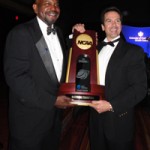 On February 7th and 8th, I participated in the 2015 Musculoskeletal Development and Regeneration Conference in Cancun, Mexico. My speech, “Regenerative Engineering: The Theory and Practice of a Next Generation Field,” highlighted the future of regenerative engineering in musculoskeletal repair and regeneration. I discussed the challenge of musculoskeletal tissue engineering and several of the latest inventions developed by the Institute for Regenerative Engineering here at UConn Health including a bioengineered matrix for the regeneration of torn anterior cruciate ligaments. I want to thank the organizers for including me as part of this for those working on the frontiers of science in both academia and corporate industry.
On February 7th and 8th, I participated in the 2015 Musculoskeletal Development and Regeneration Conference in Cancun, Mexico. My speech, “Regenerative Engineering: The Theory and Practice of a Next Generation Field,” highlighted the future of regenerative engineering in musculoskeletal repair and regeneration. I discussed the challenge of musculoskeletal tissue engineering and several of the latest inventions developed by the Institute for Regenerative Engineering here at UConn Health including a bioengineered matrix for the regeneration of torn anterior cruciate ligaments. I want to thank the organizers for including me as part of this for those working on the frontiers of science in both academia and corporate industry.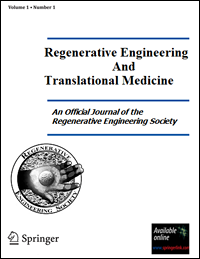 I am very happy to announce the launch of a new journal entitled Regenerative Engineering and Translational Medicine. It will be published quarterly beginning in later 2015.
I am very happy to announce the launch of a new journal entitled Regenerative Engineering and Translational Medicine. It will be published quarterly beginning in later 2015.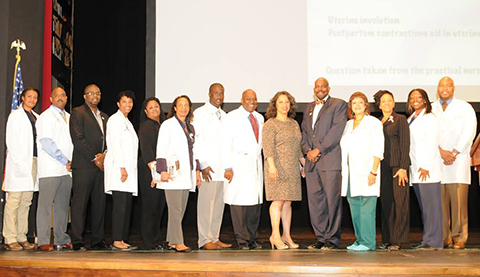 On February 21, I gave the keynote speech at the symposium sponsored by the T. Leroy Jefferson Medical Society at Inlet Grove Community High School in Riviera Beach, Florida. This event featured healthcare, science, and engineering professionals giving career-exploration talks to elementary, middle and high school students from Palm Beach County. My talk focused on career offerings in both healthcare and STEM. The symposium was a wonderful success. The T. Leroy Jefferson Medical Society is comprised of dedicated healthcare professionals working together to improve health and wellness, access to quality care, academic and career opportunities, for underserved populations. I hope every student took advantage of all R. Leroy Jefferson Medical Society had to offer on the symposium day. I want to thank the organizers and, in particular, Dr. Roger Duncan for inviting me to participate in this wonderful event.
On February 21, I gave the keynote speech at the symposium sponsored by the T. Leroy Jefferson Medical Society at Inlet Grove Community High School in Riviera Beach, Florida. This event featured healthcare, science, and engineering professionals giving career-exploration talks to elementary, middle and high school students from Palm Beach County. My talk focused on career offerings in both healthcare and STEM. The symposium was a wonderful success. The T. Leroy Jefferson Medical Society is comprised of dedicated healthcare professionals working together to improve health and wellness, access to quality care, academic and career opportunities, for underserved populations. I hope every student took advantage of all R. Leroy Jefferson Medical Society had to offer on the symposium day. I want to thank the organizers and, in particular, Dr. Roger Duncan for inviting me to participate in this wonderful event.
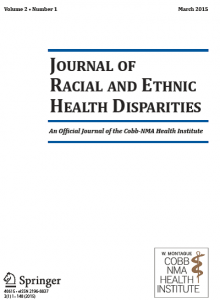
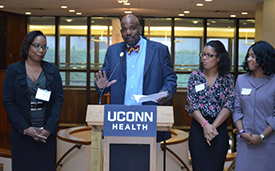 The Connecticut Institute for Clinical and Translational Science (CICATS) at UConn has been selected to take part in a new NIH initiative, Building Infrastructure Leading to Diversity (BUILD), designed to enhance diversity in the biomedical research field. The initiative’s goal is attracting minority students to the STEM workforce and encouraging them to become future contributors to the NIH-funded research enterprise.
The Connecticut Institute for Clinical and Translational Science (CICATS) at UConn has been selected to take part in a new NIH initiative, Building Infrastructure Leading to Diversity (BUILD), designed to enhance diversity in the biomedical research field. The initiative’s goal is attracting minority students to the STEM workforce and encouraging them to become future contributors to the NIH-funded research enterprise.